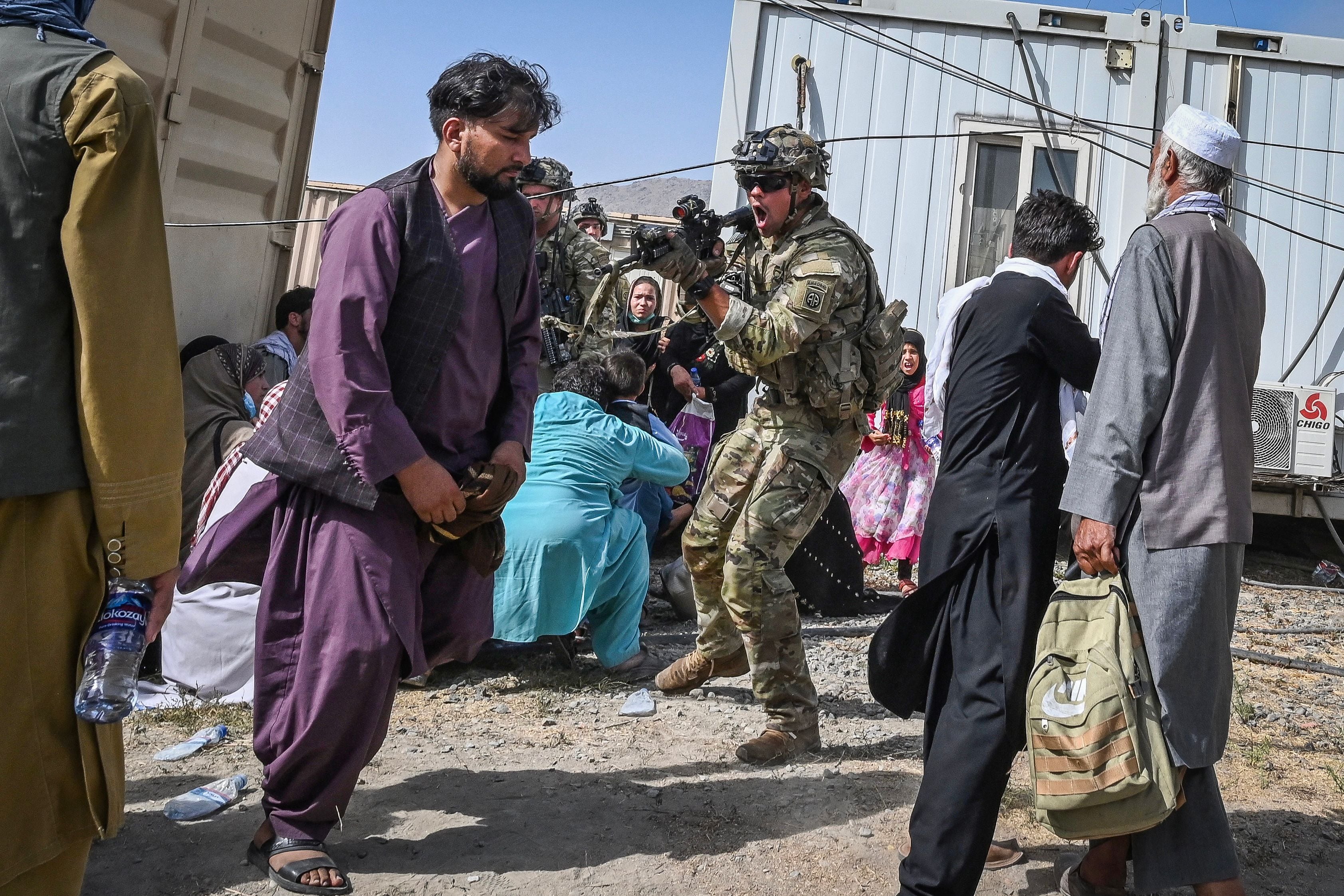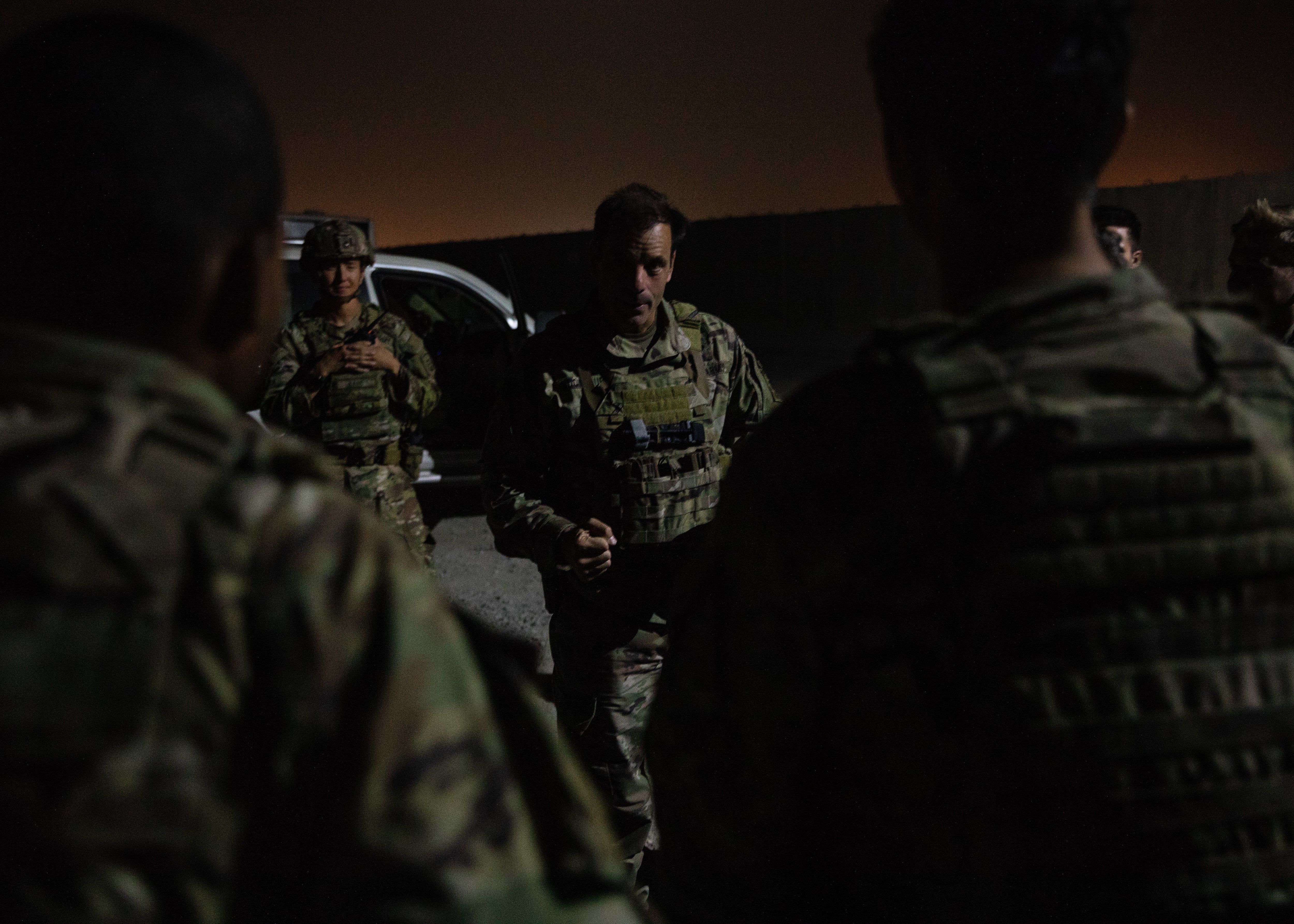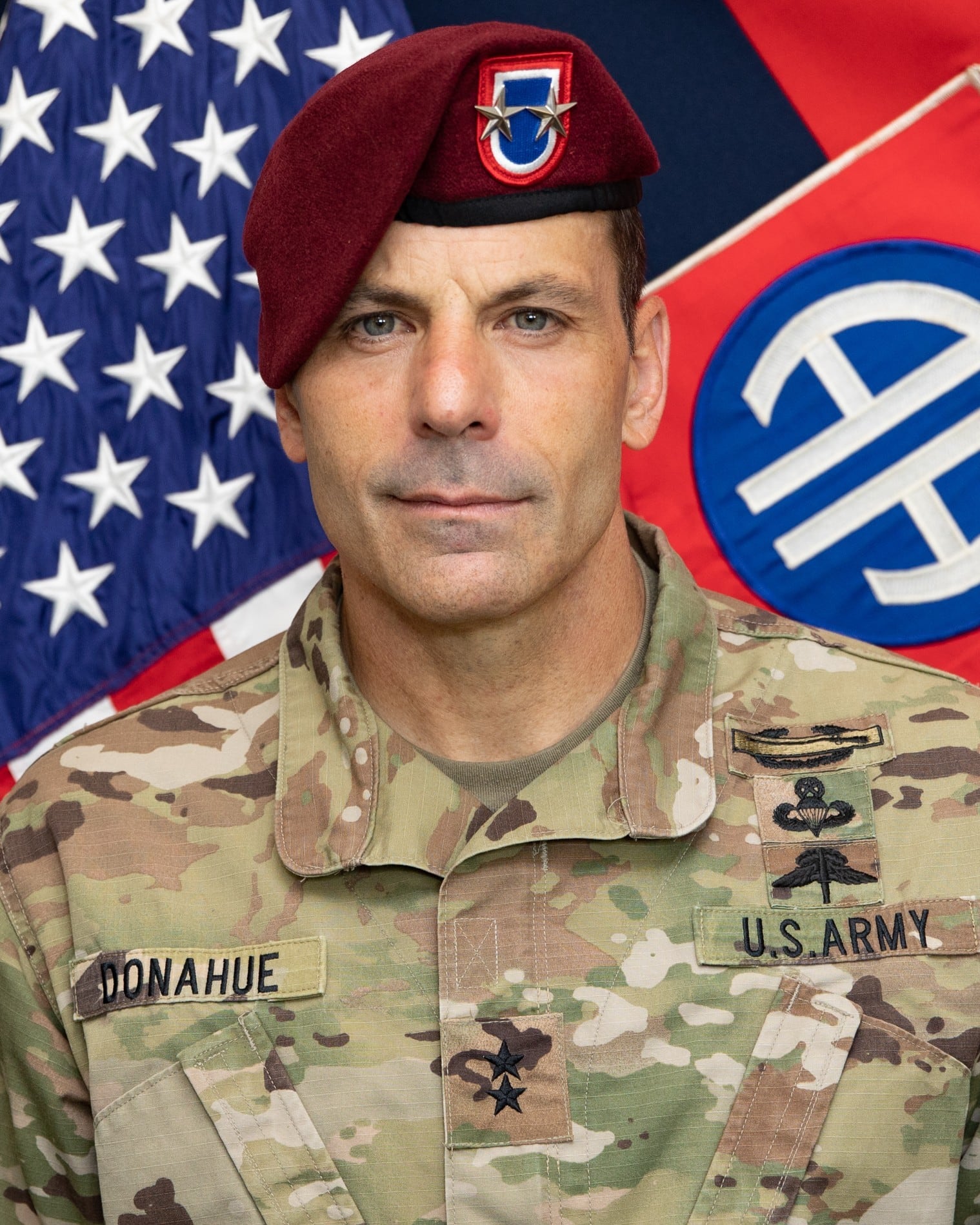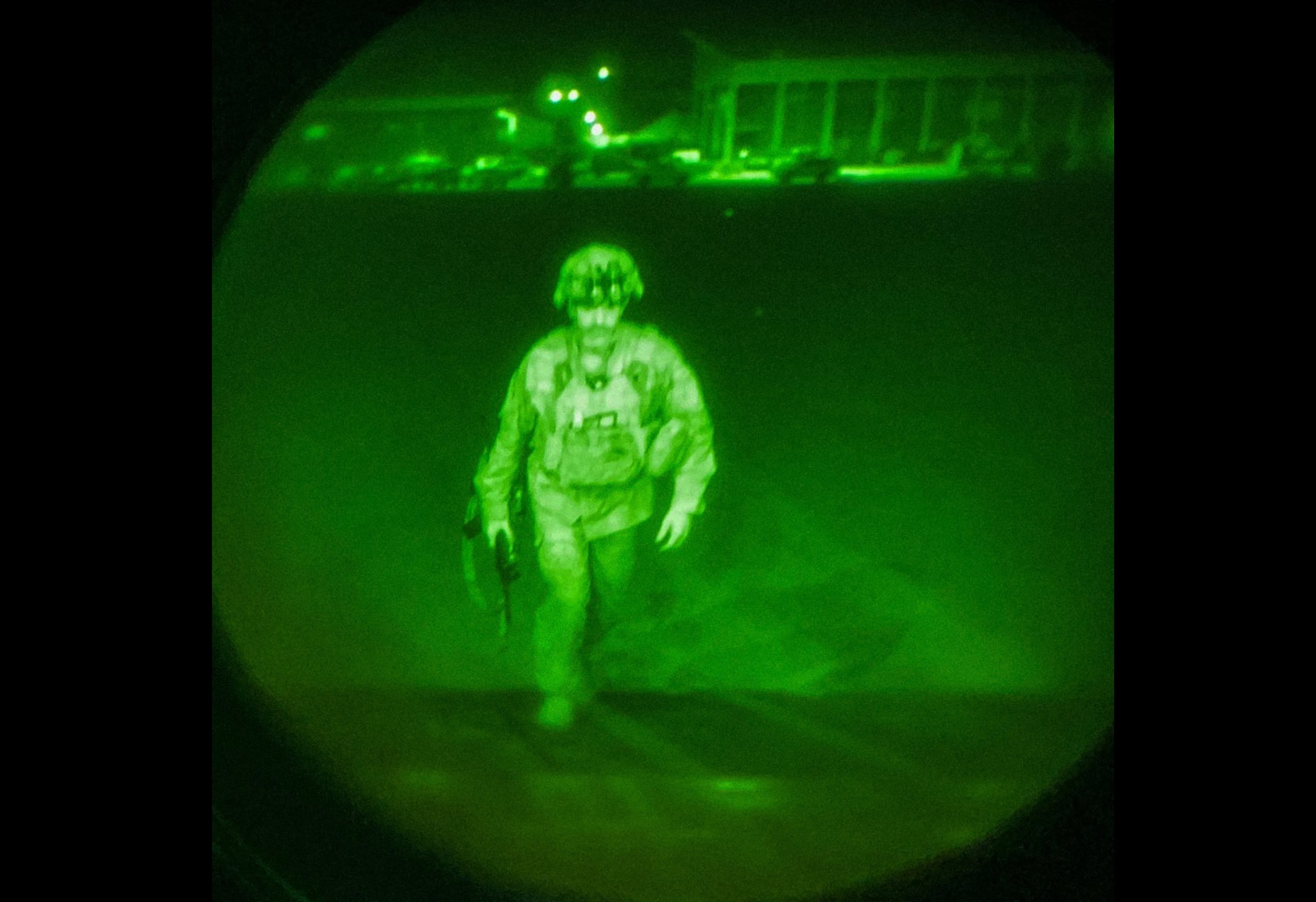Defense Department officials announced Monday afternoon that after nearly 20 years of war, the final U.S. forces on the ground in Afghanistan had departed the Kabul airport.
“I’m here to announce the completion of our withdrawal from Afghanistan, and the end of the military mission to evacuate American citizens, third-country nationals and vulnerable Afghan,” Marine Gen. Frank McKenzie, head of U.S. Central Command, said during a press conference. “The last C-17 lifted off from Hamid Karzai International Airport on Aug. 30, this afternoon, at 3:29pm, East Coast time. And the last manned aircraft is now clearing the airspace above Afghanistan.”
Later in the evening, the DoD released a photograph of the last U.S. servicemember to board the final C-17 flight out of Afghanistan: Maj. Gen. Christopher Donahue, commander of the 82nd Airborne Division.
RELATED

Donahue had been directing security at the airport since Aug. 17, although Navy Rear Adm. Peter Vasely maintained overall command of U.S. forces in Afghanistan.
Under Donahue’s watch, more than 79,000 people made it out of Kabul on U.S. military aircraft after the Taliban overran Kabul on Aug. 14.
His steps onto the final C-17 marked the close of America’s longest war, bookending the conflict that was once the centerpiece of the Global War on Terror. More than 160,000 Afghans died during the war, and 2,461 Americans were killed, including 13 who died last week in an Islamic State suicide bombing while helping evacuees into the airport.

Before taking the reins of the 82nd Airborne, Donahue commanded Special Operations Joint Task Force-Afghanistan, which oversaw special operations missions across the country from its headquarters at Bagram Airfield.
But Donahue’s steps onto the ramp of the last C-17 out of Kabul started two decades earlier.
A career shaped in the shadow of 9/11
On the morning of Sept. 11, 2001, Donahue was a young captain acting as an aide for Air Force Gen. Richard Myers, vice chairman of the Joint Chiefs of Staff.

Years afterwards, Myers recounted how in the frantic minutes after the second plane hit the South Tower of the World Trade Center in New York, Donahue burst into an ongoing meeting with a Georgia senator and handed the general his cell phone. Soon after, a plane struck the Pentagon, and the nation was at war.
Because the chairman of the Joint Chiefs was on a plane at the time, Myers was the ranking officer in the U.S. military, and Donahue was at his hip.
After leaving the Pentagon, Donahue went to Army Special Operations Command, where he built a career characterized by constant deployments to combat zones.
His official biography notes that between his 17 deployments — the Kabul evacuation being his 18th — and an Army War College fellowship at Harvard, Donahue held roles across the USASOC chain of command, from troop to brigade commander.
The conspicuous lack of unit information throughout his biography has led some observers to argue that he served in, and then later commanded, 1st Special Forces Operational Detachment-Delta, better known as Delta Force, before his assignment to Joint Special Operations Command as operations directorate chief.
According to author Wesley Morgan, Donahue commanded a Delta troop in Iraq and led a Delta squadron in Afghanistan before assuming senior leadership roles back in the conventional realm.
“I have deployed to combat at every rank from captain to two-star general,” Donahue explained in a recent From the Green Notebook podcast.
Now, though, a major chapter of the sprawling war that shaped Donahoe’s career — and that of a generation of Army leaders — is finished.
Davis Winkie covers the Army for Military Times. He studied history at Vanderbilt and UNC-Chapel Hill, and served five years in the Army Guard. His investigations earned the Society of Professional Journalists' 2023 Sunshine Award and consecutive Military Reporters and Editors honors, among others. Davis was also a 2022 Livingston Awards finalist.




